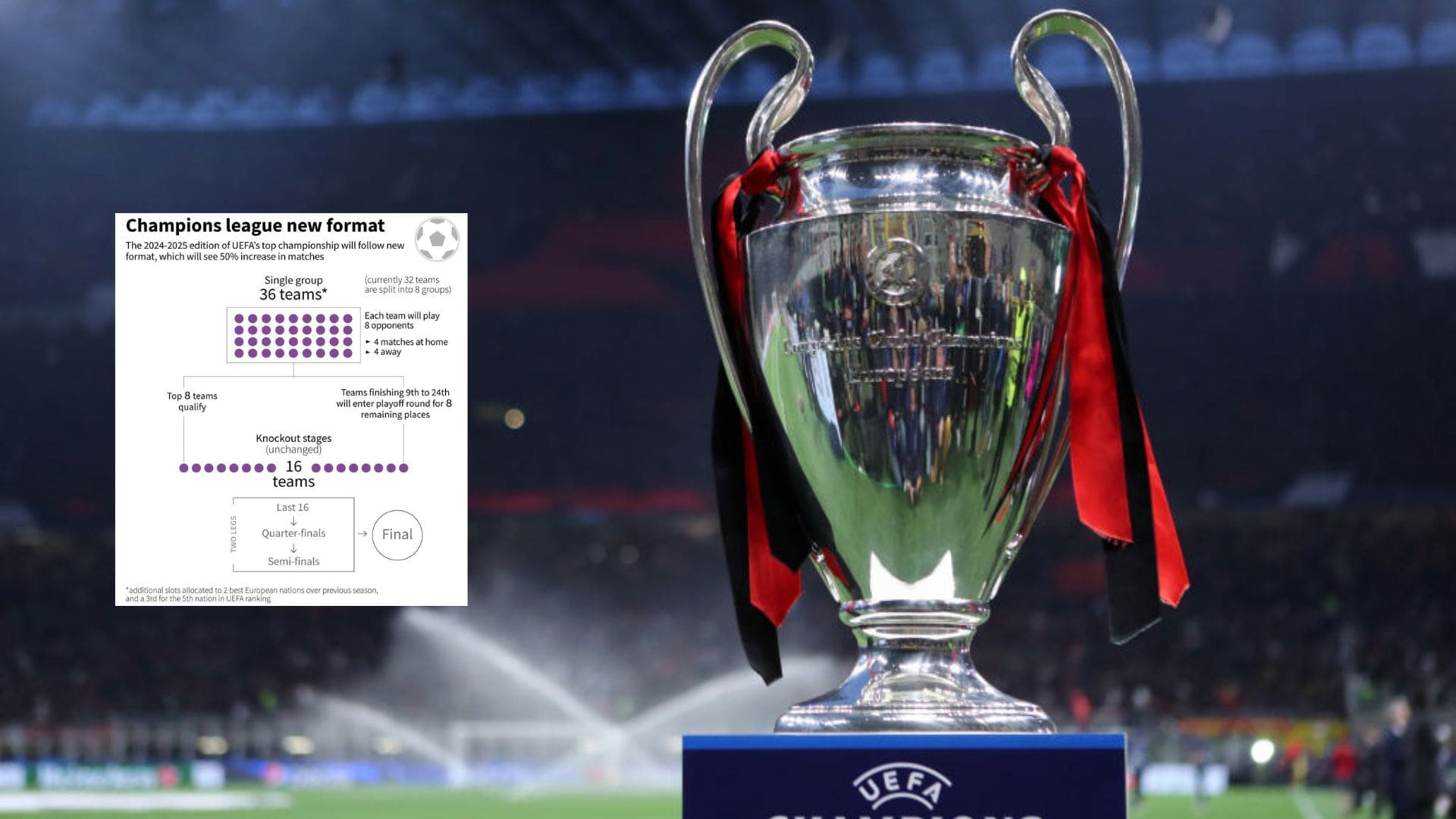Home » The Future of the UEFA Champions League: Exploring the New Format
The Future of the UEFA Champions League: Exploring the New Format

The UEFA Champions League (UCL) is set to undergo a significant transformation starting from the 2024-25 season. With a shift to a 36-team tournament, football fans around the world can expect a thrilling departure from the traditional format. This article provides a comprehensive breakdown of the changes and their implications for the prestigious club competition.
- Why is this all happening?
The primary driving force behind the changes to the UCL format is the desire for increased revenue generation. More games equate to higher broadcasting revenues, and the top clubs, who often draw the largest audiences, stand to benefit the most. Additionally, these clubs seek more meaningful matchups against their main rivals, which the new format aims to deliver at an earlier stage of the competition.
- So does this mean more games?
Initially, the plan proposed in 2021 called for a significant expansion in the number of games, with each team playing 10 matches in the group stage, resulting in a total of 225 games throughout the season. However, the final format scaled back the number of group stage fixtures to eight per team, reducing the total number of games to 189. As a result, two additional matchdays will be required for the group stage of the Champions League.
- What is the ‘Swiss model’?
The ‘Swiss model’ refers to the forward-thinking strategy that will be applied in the revamped version of the Champions League. Instead of the teams being divided into eight groups of four as is the situation at the moment, all of the participating clubs will be grouped in one large table based on their point totals and the goal differential between them and the other clubs. The Swiss-system tournament that is played in chess serves as an influence for this model. In this event, teams do not compete against one other. On the other hand, in contrast to chess, the Champions League pairings for the entirety of the group stage will be decided before the beginning of the season.
This model ensures that teams advance in a manner that is both fair and efficient, much like the qualifying tournament for the CONCACAF Nations League, which is similar to other events that have a significant number of participants.
- How many teams will participate?
The new Champions League format will see an increase from 32 to 36 teams. This expansion guarantees each club a minimum of eight games, with most teams playing at least 10 matches throughout the tournament.
- What happened to the places based on historical performance?
Initially, the proposal called for two spots to be reserved for the teams with the greatest five-year UEFA coefficient but which were eliminated from the Champions League qualification process. With this strategy, teams had the opportunity to qualify based on their previous performances in Europe; hence, a safety net was established for those who had continuously performed exceptionally well on the continental level. However, UEFA came to the conclusion that this clause should not be included since it is not consistent with the values that support a model for sports that is founded on meritocracy and fair competition.
- How will the fixtures be decided?
UEFA plans to create four pots consisting of nine teams each, likely based on the five-year club coefficient. Each team will face two opponents from every pot, resulting in an eight-match fixture list of comparable strength. The draw will aim to create more prominent matchups by pairing teams from the top pots, which was not possible under the previous system. However, teams from the same association will still be prevented from meeting in the group stage.
Using a hypothetical example, Premier League champions Manchester City’s Swiss Model fixture list could include matches against Atletico Madrid, Bayern Munich, Juventus, Paris Saint-Germain, Benfica, FC Salzburg, Young Boys, and Sheriff Tiraspol.
- Who advances to the knockout rounds?
The top eight teams from the group stage will progress directly to the round of 16 and will be seeded in the draw. Teams placed 9th to 24th will enter two-legged playoffs, with the winners advancing as unseeded teams and the losers exiting the competition. As of the 2024-25 season, there will be no drop-down of teams from the Champions League to the Europa League knockout rounds. Teams ranked 25th to 36th will be eliminated from European competition immediately.
Interestingly, a team that finishes 24th in the group stage, which would have secured an unseeded place in the Europa League under the current system, could potentially become the European champions.
Conclusion
The new format of the UEFA Champions League, set to debut in the 2024-25 season, brings forth significant changes to the competition. The expansion to a 36-team tournament, adoption of the Swiss Model, and the introduction of coefficient places reflect UEFA’s aim to increase competitiveness and provide more opportunities for clubs from various leagues. While the focus remains on revenue generation and delivering engaging matchups, the modifications seek to strike a balance between rewarding historical success and upholding the principles of sporting meritocracy. As the football world eagerly awaits the implementation of these changes, only time will reveal the true impact on the landscape of European club football.
